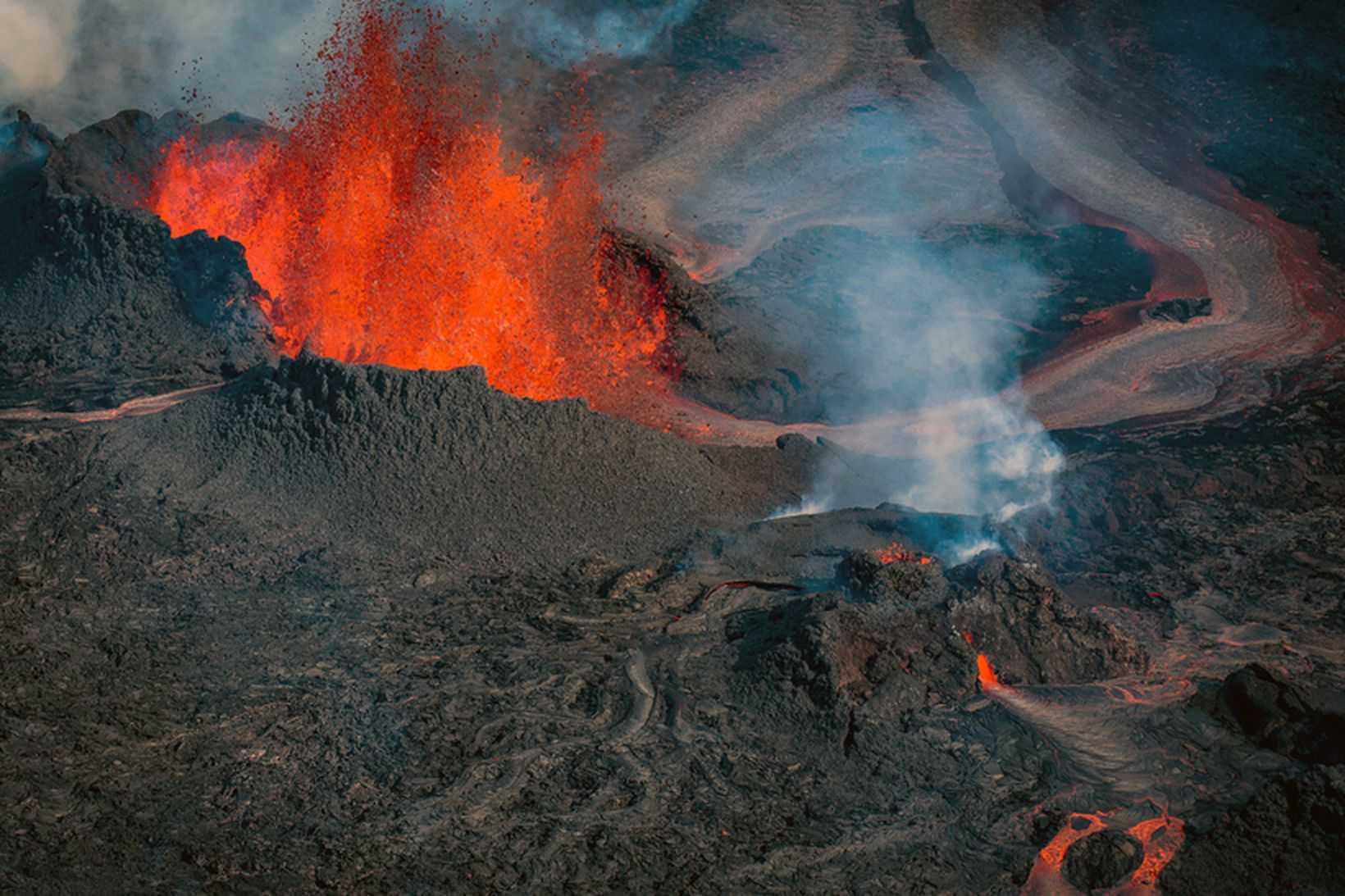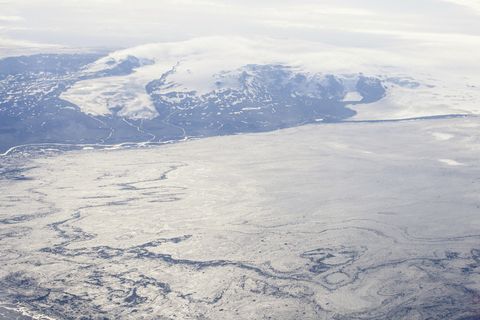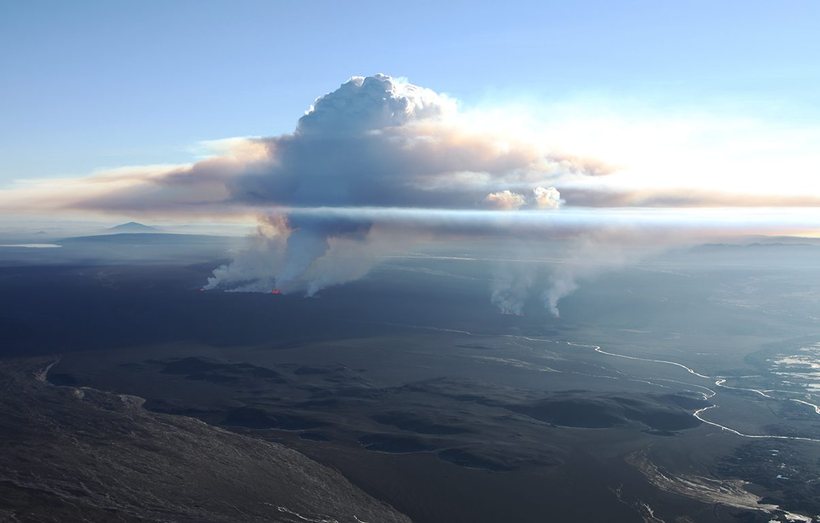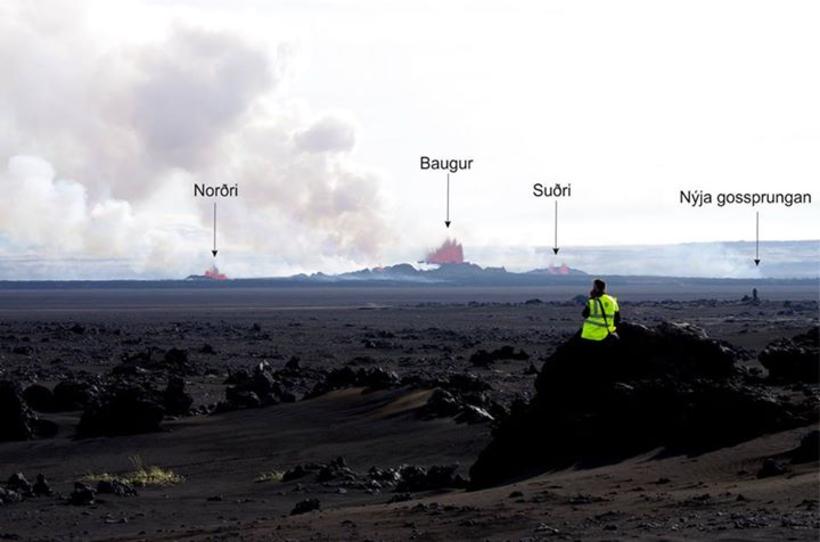"The river can only give way"
"The lava is flowing fast, even though the eruption itself seems a bit more quiet," says Ármann Höskuldsson, volcanologist at the Institute of Earth Sciences at the University of Iceland. The glacial river Jökulsá á Fjöllum is in retreat from the oncoming flow of lava. "That's pretty much all it can do."
Ármann just returned from an inspection tour of the eruption site. The craters Suðri and Baugur are the most active ones, with Norðri only spouting gasses. The new rift, that opend up and started to erupt early Friday morning, seems to have fully abated.
The lava has now travelled 16.2 kilometers from Suðri, mostly to the northeast. Yesterday, the lava flowed an additional kilometer away from Suðri.
Concerns over Bárðarbunga
Sigmundur Davíð Gunnlaugsson, Prime Minister of Iceland, was today informed on the situation that seems to be developing in Bárðarbunga, with a 20 meters deep subsidence in the Bárðarbunga caldera causing scientists to worry that something more might happen in the Bárðarbunga area. Rögnvaldur Ólafsson, coordinator at the Civil Protection Department, says that the meeting is both a regular meeting beacause of ongoing seismic activity, but also to brief the Prime Minister on Bárðarbunga.
Poisonous gasses threaten scientists
Poisonous gases are a major concern of scientists working near the Holuhraun eruption. High concentrations of poisonous gasses persist around the site of the eruption, forcing scientists to wear gas masks and detectors. Civil Protection has released the notes from today's meeting of the Scientific Advisory Board of the Civil Protection.
Towns east of Holuhraun have reported an increase in concentration of pollutants, but the according to the Environment Agency there is no cause for concern in those areas.
Volcanologist Ármann Höskuldsson.
mbl.is/Árni Sæberg






